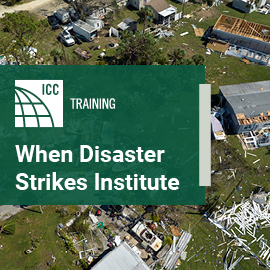
CO2 standards: Do you know the dangers of carbon dioxide?
![]() I love soft drinks that come from a beverage dispenser. The more fizz in my cup, the better. So why do I bring this up? The chemical compound that creates the fizz and the bubbles is carbon dioxide (CO2).
I love soft drinks that come from a beverage dispenser. The more fizz in my cup, the better. So why do I bring this up? The chemical compound that creates the fizz and the bubbles is carbon dioxide (CO2).
There has been much written in regard to carbon monoxide (CO) and the life-safety hazards it poses, but not much in regard to carbon dioxide. Like CO, CO2 is colorless, odorless and tasteless. Like CO, CO2 if present in the right concentrations can be just as deadly.
Phoenix incident sheds light on severe risk
Depending on where your operation is located, and the jurisdictions that you serve, you may have already been required to either monitor a CO2 detection system, or to install a CO2 detection system. I first came across this in Phoenix, where it is a requirement to connect a CO2 detection system into the building fire alarm system.
An incident occurred in 2011 in Phoenix at a fast-food establishment in which an employee passed out. When members of the Phoenix Fire Department (PFD) arrived at the location they could not figure out what the issue with the employee was. It was reported that she was about four months pregnant. It was also reported that she fell while working in the basement.
Two members of the PFD went down to see if they could find anything out of the ordinary. While in the basement, they began to feel a burning in their lungs. As they returned back up the stairs they both became lightheaded. At this time the restaurant was evacuated and a full hazmat response was initiated. You can watch a full reenactment of this Phoenix incident below.
It was discovered that the CO2 dispensing equipment that was located in the basement had developed a leak. Since this incident, the PFD as well as other areas in Arizona have enacted requirements for CO2 detection systems.
Exposure to CO2 can lead to hypercapnia. This occurs when the body has too much CO2 in the blood, and the symptoms are headaches and confusion. As the amount of CO2 increases in the body the skin will become flush, there’s increased heart rate and blood pressure and if left unchecked, respiratory failure and death.
A number of other reported CO2 exposure events have been reported at restaurants and other facilities in which CO2 is stored and dispensed. A 2016 Denver Post article noted four U.S. CO2 related deaths in recent years.
Where to see CO2 standards in the fire code
In the 2015 edition of the International Fire Code (IFC), the requirements for CO2 detection are found in Chapter 53, “Compressed Gases.” Section 5307 is “Carbon Dioxide (CO2) Systems Used in Beverage Dispensing Applications,” here’s a look:
5307.5 Required protection. When carbon dioxide storage tanks, cylinders, piping and equipment is located indoors, rooms or areas containing carbon dioxide storage tanks, cylinders, piping and fittings and other areas where a leak of carbon dioxide can collect shall be provided with either ventilation in accordance with Section 5307.5.1 or an emergency alarm system in accordance with Section 5307.5.2.
5307.5.2 Emergency alarm system. An emergency alarm system shall comply with all of the following:
- Continuous gas detection shall be provided to monitor areas where carbon dioxide can accumulate.
- The threshold for activation of an alarm shall not exceed 5,000 parts per million (9,000mg/m3).
- Activation of the emergency alarm system shall initiate a local alarm within the room or area in which the system is installed.
The threshold is a tank of 100 pounds or greater. Within the IFC is a reference to NFPA 55, “Compressed Gases and Cryogenic Fluids Code.”Chapter 6, “Building-Related Controls,” contains the following requirement:
8 Employee Alarm System. Where required by government regulations, an employee alarm system shall be provided to allow warning for necessary emergency action as called for in the emergency action plan required by 4.2.1.1, or for reaction time for safe egress of employees from the workplace or the immediate work area, or both.
Chapter 13, “Insulated Liquid Carbon Dioxide Systems,” includes Section 13.10, “Carbon Dioxide Beverage Systems,” while the requirements for a detection system reside in 13.10.4.2 Emergency Alarm System, which closely parallels the requirements found within the IFC.
There are a number of CO2 detectors on the market. Before installing a system, you will need to be familiar with the installation and testing requirements, which the device manufacturer can provide.
Even if you don’t install the actual detector or system, a check with the local AHJ may be in order to see if the CO2 detection system is required to be connected to the building’s fire alarm system.
This article originally appeared in the February 20, 2018, issue of Security Sales & Integration and is reprinted with permission.







